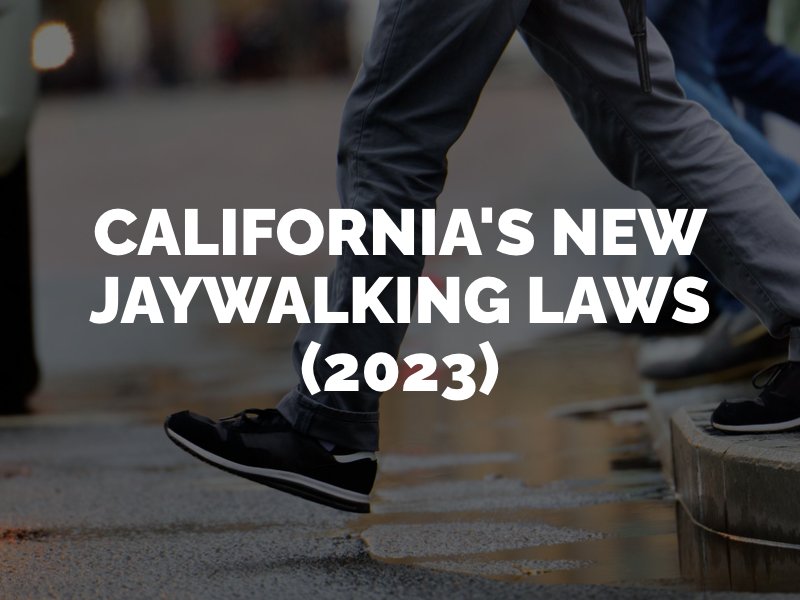Jaywalking Legalized in California – What It Means for Pedestrians
On January 1, 2023, jaywalking became legal in California with the Freedom to Walk Act, reversing what was once one of the strictest laws against this practice in the country. Now, pedestrians can cross the road at places other than intersections and crosswalks without penalty. However, certain rules still apply to jaywalking, and it is now even more important for pedestrians to prioritize their safety when crossing the road. For legal help with a jaywalking case, contact our Los Angeles personal injury lawyer.

What Is California’s New Jaywalking Law?
Jaywalking refers to pedestrians crossing a roadway at a place between two adjacent intersections that is not a crosswalk. Some states prohibit jaywalking, while others do not. Until Governor Gavin Newsom signed Assembly Bill No. 2147 in 2023, California prohibited pedestrians from crossing the street illegally. Breaking the jaywalking law could result in a citation and fine given by a peace officer.
AB 2147, also known as the Freedom to Walk Act, legalized jaywalking in California as of 2023. The new law prohibits peace officers from stopping pedestrians for jaywalking unless a “reasonably careful person would realize there is an immediate danger of collision with a moving vehicle or device moving by human power.” This bill amended Section 21955 of the California Vehicle Code to include this provision. It also states that it does not relieve a pedestrian from the duty of using due care for his or her safety.
How to Cross the Road Safely in California
Jaywalking may now be legal in California, but pedestrians are still responsible for their own safety while crossing the road. Crossing at a marked or unmarked intersection or crosswalk is still the safest way to get across. Jaywalking can increase the risk of accidents by enhancing the number of opportunities for vehicle and pedestrian traffic to meet. If a motor vehicle driver does not see a pedestrian, the person walking or jogging may get hit by a car. This can lead to catastrophic injuries or even death.
When crossing a road in California, use the following safety tips:
- Never assume you have the right-of-way. Stop at a curb or place of safety, look both ways, and make sure all vehicles have come to a complete stop before crossing.
- Find an intersection or crosswalk to cross. If there is a pedestrian control signal in place at an intersection, only cross when given the Walk sign. Make eye contact with stopped drivers to ensure that they see you.
- Do not dart out into the street, even if you are legally allowed to do so. Wait until there is no oncoming traffic in either direction and the way is clear before proceeding.
If you step from a curb into the flow of traffic and an oncoming driver does not reasonably have enough time to stop to avoid striking you, you could be responsible for the collision – even if you were within your right to jaywalk under the new California law. This could mean little to no financial compensation being paid by the driver’s car insurance company for your injuries and medical bills.
Injured as a Pedestrian in California? We Can Help
Liability for a pedestrian accident in California will be determined on a case-by-case basis. Jaywalking is no longer enough to prove that a pedestrian was negligent per se – meaning negligent based on a broken law. Now, a driver must show that the pedestrian jaywalked at a time when a reasonably careful person would have realized there was an immediate danger of a collision to avoid liability. Even if a pedestrian is found to share fault for an accident, however, he or she could still recover partial compensation under the state’s comparative fault law.
For more information about how pedestrian injury cases work in California, contact Rose, Klein & Marias, LLP for a free case consultation with a Los Angeles pedestrian accident attorney.
